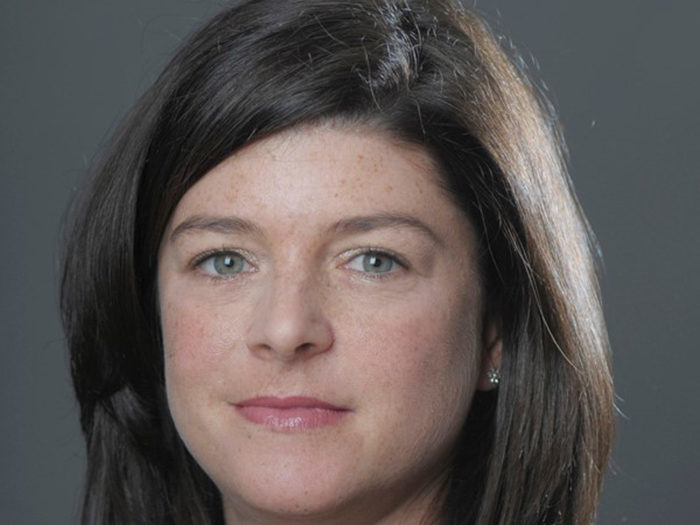Risk Scenario
Telemedicine Licensing Regulation Compliance Is Vital. Here’s What Happens When You Get It Wrong
Disclaimer: The events depicted in this scenario are fictitious. Any similarity to any corporation or person, living or dead, is merely coincidental.
PART ONE: TROUBLED TIMES
Rose Crawford is the risk manager for the St. Bernadette Health System, and she has never seen anything like this. The ongoing pandemic has strained the six-hospital system to the breaking point.

Things have gotten so bad that on any given day, she doesn’t know which fire to put out next. Grief-stricken and burned-out nurses and doctors are resigning at a pace the system has never seen before. Daily deaths from the coronavirus are ongoing.
Ten of the Connecticut-based system’s nurses have filed a class action, saying an administrative vaccine mandate violated their civil rights. Shortages, of oxygen, masks and other crucial health care supplies, make every day a game of operational whack-a-mole. And that’s on top of the stresses and strains that come with administering good health care—and those existed well before the pandemic.
The one person keeping Rose sane is her good friend Mollie Walsh. A divorced mother of three teenagers, Mollie worked her way through school, garnering a master’s degree in health care administration on her rise to become the system’s chief operational officer.
They laugh together, they cry together, but they remain steadfast friends.
The technology that gives them hope is telemedicine. They saw its use skyrocket in 2020 and 2021. But they were building the airplane as it thundered down the runway, which leaves them with lots of unanswered questions.
At a meeting in the spring of 2021, Rose, Mollie and the system’s CFO, Brad Thayer, are on a Zoom call trying to wrap their heads around the liabilities the surge in telehealth may have spawned.
“I’m not sure I even know where to begin,” says Rose, in a response to a question from Brad about what the extent of those liabilities might be.
“Well we better get it figured out,” is his terse and not that sympathetic response.
PART TWO: THE DEMISE OF PETER GUTMAN
Phase one in trying to determine where surging telemedicine use might create liability exposures involves the exhaustive [and exhausting] process of tracking and cataloguing in which states patients are receiving telehealth treatment from.

As we’ve learned, different states have different regulations on which physicians are licensed to provide health care treatment and advice. If a physician provides telephonic health care service to a patient in a state where they’re not licensed, what are the ramifications?
Adding complexity to the question is the “snowbird” dynamic, i.e., patients with second homes in Florida, Arizona or other sunshine states receiving treatment from the Connecticut-based hospital system’s physicians via teleconference. Adding even more complexity is what we’ll call the “pandemic diaspora,” with students, professionals—all walks of life, really—shifting into different housing patterns due to shutdowns, quarantines and other pandemic-related lifestyle changes.
That’s where the liabilities involved in the use of telemedicine came home to roost for the St. Bernadette Health System. They initially present in the form of the unfortunate Peter Gutman, a graduate student in comparative literature at Columbia University.
Gutman established a patient/doctor relationship with a St. Bernadette-affiliated psychiatrist based on his residence in his parent’s home in Bridgeport, Conn. He was diagnosed with depression in high school and remained under the care of the St. Bernadette psychiatrist throughout his undergraduate studies and into his graduate student career.
A break up with a fellow student just as the pandemic struck in the spring of 2020 placed Peter Gutman at even greater risk. He became erratic, ditching his studies and being out of touch with his parents for weeks, then months on end.
“Where are you now?” the St. Bernadette psychiatrist said to Peter during a video and voice call in February of 2021. “I don’t know where I am. I don’t know who I am,” Gutman said mysteriously before hanging up.
In fact, Gutman was in Colorado, living in a youth hostel in Winter Park, and working with a local construction crew, acting as a carpenter’s assistant on a job building a home above the Frazier Valley.
Within 24 hours of that conversation Gutman was dead. Another resident of the youth hostel found him unresponsive in mid-morning on a lower bunkbed, an empty bottle of prescription medication on the floor beneath him.
Where St. Bernadette’s ran into legal trouble was that Gutman died in Colorado, a state where the St. Bernadette’s psychiatrist was not licensed. Standard, or traditional medical malpractice polices exclude coverage for unlicensed treatment. It didn’t take plaintiffs’ attorneys for Gutman’s parents too long to figure that part out.
Now they were on the hunt, stringing together similar cases within the St. Bernadette’s system and others. Not all of the cases involved psychiatric care, but all of them shared the same blemish, unlicensed care that resulted in negative, sometimes catastrophic outcomes.
PART THREE: CRESTFALLEN PROFESSIONALS
It’s a typical Monday morning for Rose Crawford. By that we mean she’s so busy, feeling overwhelmed really, that she’s contemplating quitting and going to work in a flower shop.
When she gets an instant message from Mollie Walsh, saying “Gotta second?” a smile creases her face. Rose’s brief hope is that she’s about to get a humorous Monday morning update on one of Mollie’s forays into the world of online dating.
If only….
Instead of humor, Rose gets more fuel for anxiety.
“I just got a call from the general counsel’s office,” Mollie tells Rose.
“And?” Rose says, feeling her stomach sink.
“It looks like we have no fewer than seven plaintiffs alleging unlicensed treatment of patients via telemedicine in the past year,” she says.
“The attorneys want to hold a meeting with you and our insurance broker as soon as possible.”
“Got it. Okay I’ll set it up,” Rose says, her own feelings getting darker by the minute.
The conversation with the broker makes matters worse. Cast blame where we might, but the health care system’s traditional carriers have not updated their medical malpractice policies to allow for endorsements to cover telephonic treatment in the case of interstate travel on the part of existing hospital clients.
With the lingering threat of uncovered medical malpractice filings on the horizon, staff legal uprisings and the ongoing, grinding threat of COVID-related security concerns, Rose Crawford, Mollie Walsh, Brad Thayer and the rest of the health care system administration gird themselves for the quarterly Board meeting.
It doesn’t go well.
During the expected back and forth between the members of the Board and the administration on COVID-related liabilities and concerns, hospital administration has to admit that the system is facing legal actions due to unlicensed telephonic treatment. Rose Crawford also has to admit that there is a very good chance there is no insurance coverage should these legal actions break the wrong way.
When Rose Crawford brings up the sad case of Peter Gutman, her narrative is received with shocked silence from the Board.
After the meeting, there is further uncomfortable silence as Rose and the rest of the hospital administration file out of the boardroom, clutching their folders and binders like inadequate security blankets.
As she heads back to her office, feeling numb, it feels to Rose like unfriendly eyes are burrowing into her back.
…
“I guess I should have seen this one coming,” Rose says to Mollie, as the two commiserate over cranberry-orange vodkatinis at their favorite watering hole later that night.
“Maybe,” says Mollie. “We don’t know how this is going to work out legally,” she adds hopefully.
“Oh this is not going to be good. Ever heard of social inflation?” Rose asks with an edge in her voice.
“Not … really,” Mollie says.
Rose stares stoically at the slice of orange affixed to the rim of her glass. She slides the orange slice back and forth over rim meditatively.
“It refers to the fact that jury verdicts in recent years are exploding in size. Tens of million sometimes when something like $500,000 would have been handed down six or seven years ago. In a sense, it’s viewed as payback from the little guy back to deep-pocketed corporations. They call them nuclear verdicts.”
“Nuclear verdicts…” Mollie says.
Rose nods. Her eyes welling up.
“Nuclear.” &
![]()
Risk & Insurance® produced this scenario in conjunction with Berkshire Hathaway Specialty Insurance. This scenario is provided for general educational and informational purposes only as an example of the type of claim(s) that may be submitted under a liability policy. Applicability of coverage terms depends on the actual facts of each individual claim and the terms, conditions and exclusions of the applicable insurance policy. The information contained herein is for informational purposes only and may not be relied upon as legal, financial, regulatory, compliance, or any other type of professional advice. Not all products and services are available in every jurisdiction, and insurance coverage is governed by actual policy language.
PART ONE: Telehealth can be a great tool for reaching patients outside the hospital setting, but it does raise a series of potential issues:
- It is important to have a strong triage protocol in place to make sure that patients are getting the level of care they need. While many patients can be safely treated through telemedicine, some will need care that can best be found in a hospital setting. Making sure that patients are directed to the care that they need is key to minimizing the risk of injury or death.
- Documentation of the patient’s telehealth visit needs to be integrated into that patient’s medical record. Just as with an in-person visit to a medical provider, poor documentation can lead to inappropriate care or a poor outcome in a medical malpractice case.
- Patient follow-up is also important. Procedures must be in place that allow for a medical provider or their staff to follow up with a patient, determine if treatment is working and schedule additional appointments as needed.
PART TWO: As noted in the scenario above, the availability of telemedicine presents a series of potential licensing issues. Each state and licensing board has its own set of rules around the use of telemedicine, what specialties are allowed to practice telemedicine and under what circumstances it is considered acceptable.
- It is important to know where your patient is physically located before you start a telehealth visit.
- It is also important to know what the rules and laws are in that state around telemedicine – keeping in mind that these rules and laws may change frequently.
Ideally, your Telemedicine IT infrastructure will incorporate measures that address these concerns and stay up to date with the appropriate rules and regulations.
The right knowledge on the front end should allow you to direct the patient to an appropriately licensed practitioner within your organization, or if that isn’t possible, direct that patient to a provider in their area that can provide the needed care.
PART THREE:
- A failure to create protocols for handling out of state patients can lead to an unexpected aggregation of risk in an area where insurance coverage may be questionable.
- Even where policies don’t have exclusions around unlicensed care providers, they will often times have criminal acts exclusions which may apply.











